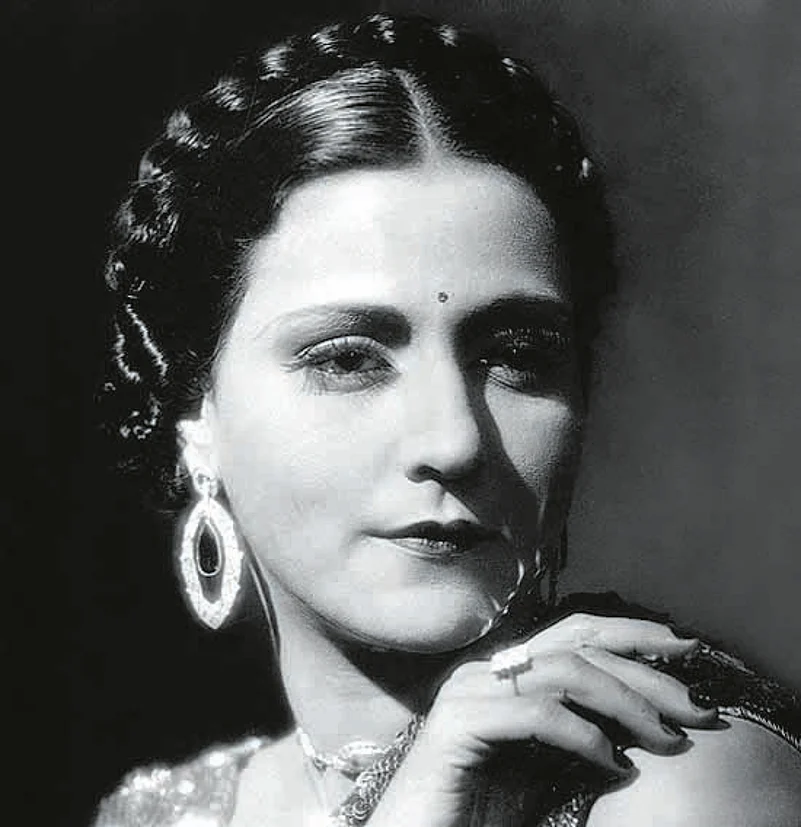Think silent movies and a few names and titles float on silently on to the mind’s screen before fading away. Dadasaheb Phalke, Ardeshir Irani, Raja Harishchandra, Light of Asia, Sulochana, Sita Devi.... Then my screen at least goes blank. B.D. Garga’s book Silent Cinema In India will change all that for anyone who dips into this elegantly produced coffee-table volume. Be warned, it is not a book to be read casually. Packed with names and facts, it covers a significant, formative part of India’s cinema history, and thus is serious reading. But the text flows easily and the subject gains in its power to fascinate as one delves deeper.
Advertisement
In his introduction, Garga moans the loss of valuable footage from the silent era—only one per cent of the 1,300 silent films produced in India are available for students of cinema. The rest is lost. The ones that survive are thanks to the fact that Ardisher Irani’s productions were with German collaboration, and prints survive with German producers!
The narrative takes off with the lead-up to the advent of the moving picture, and covers modern theatre briefly to indicate the influence it would have on cinema. It’s amazing to learn that a $25,000 bet on the way a horse lifts its hoofs while trotting was the beginning of the ‘series’ photography that would eventually evolve into what the movie camera would do. The narrative winds its way through other significant milestones that cumulatively lead up to the Lumiere Brothers and their first ‘moving show’.
Advertisement
Garga describes Lumiere Brothers’ first ‘moving show’ in Bombay in detail: “The admission fee was one rupee, the programme featured six items...the entire show lasted less than an hour with each film seventeen metres long. The transparent screen was about 20 metres away from the projector. There were four shows daily. The audience, nearly 200 of them, watched with bated breath and cheered lustily at the end”. The Times of India called the invention “almost the greatest scientific discovery of the age”.
Chapter by chapter, the story of the establishment—the growth and maturing of the silent cinema industry in India—is recorded in minute detail. Long forgotten names come alive, their contribution acknowledged. Like the pioneering work of Hiralal Sen, who set up the Royal Bioscope Company in Calcutta with his brother Motilal and who shot not just scenes from popular stage plays but also the first advertisement film, for Jabakusum Hair Oil. Helping set up cinema as an industry were Sen’s mentors—the brothers Pathe of the Societe Pathe Freres, French businessmen who turned the invention into an industry, manufacturing and marketing film equipment and raw stock, eventually producing films and making the first newsreels, shown for decades under the name Pathe News in cinema theatres the world over.
Garga tells us how the pioneer Dadasaheb Phalke laid the road on which the first movie mogul, Madan, could build his empire and the craftsman in Baburao Painter could establish a new standard of cinematic excellence and detail that brought elements of art into the craft. Phalke’s success with trick photography is known, but he also had a great marketing mind—when provincial audiences hesitated to spend three annas for a hour-and-a-half-long event, he advertised the film as ‘A performance with 57,000 photographs. A picture two miles long! All for only three annas’. And it worked—by 1927, there were 21 production houses in India.
Advertisement
Madan, on the other hand, moved to create the first socials based on Tagore’s stories; Painter was the first to introduce female artistes, and also created such realistic scenes with his painterly eye that had audiences screaming for more. He also made Savkari Pash, India’s first socio-realistic film, about money-lending, but it bombed. An audience fed on spectacle rejected his attempt at serious cinema.
Beauteous heroines light up the pages, as do photographs of stills from the films, that show expertise in lighting. Also chronicled is Fatima Begum, India’s first woman director, and the accidental discovery of Prithviraj Kapoor’s acting abilities! The photograph, posters and excerpts from dispositions, interviews, press reviews and write-ups make the book a treasure. A book every producer, director and film buff must read, to learn about the true spirit that creates history, in cinema or anywhere else.




















